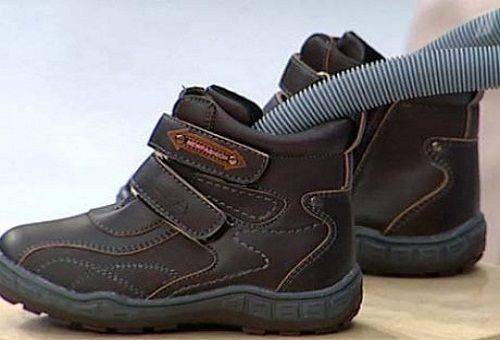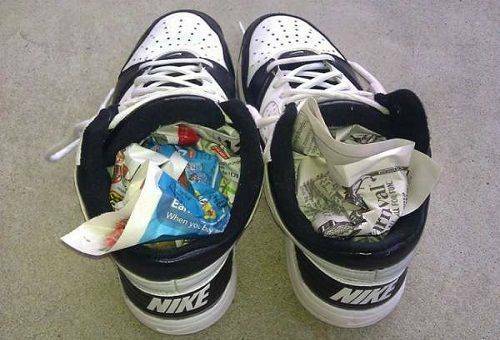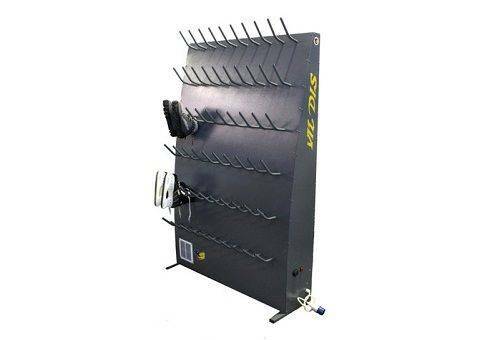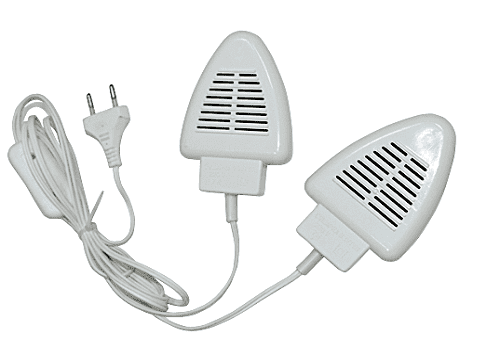Contents:
- Universal drying rules for shoes
- The most effective and affordable techniques that accelerate the drying process of shoes
- Chemical reagents that can dry and dry shoes
With the arrival of seasonal rains, many people have to think about how to dry shoes quickly. If it is wrong to use improvised means or simply to let things go by themselves, then you'll have to repair the peeled out sole, fight with an unpleasant odor or experience unpleasant sensations, re-loosening the hardened shoes. With a responsible and thorough approach, such problems do not arise. It is only necessary to choose the optimal variant of influence on capricious material, remembering that the main work should be carried out inside the products, and not from the outside.

Universal drying rules for shoes
To learn how to dry shoes correctly without the risk of damage and deformation, the following rules must be observed in all conditions and even in case of extreme haste:
- . The wet skin is too much susceptible to external influence, so even with minimal wetting,the first opportunity and start drying.
- Obvious traces of moisture should first be removed with a soft cloth. Processing is carried out not only from the outside, but also from the inside. Only after this it is possible to start more specialized actions.
- Drying should be carried out in a well-ventilated or ventilated area.
- Before starting drying, the insole must be removed, if possible. The product needs to maximally open and unfold all folds.
- Do not try to quickly dry sneakers, boots or other massive products, placing them after the devices of artificial heat. This is fraught with deterioration of the product, cracking of the material, peeling off individual elements.

When working with shoes after washing, the same rules apply, even more so. You do not need to postpone the work, otherwise you can face phenomena in which the pair will no longer be subject to recovery.
The most effective and affordable techniques that accelerate the drying process of shoes
It is worth considering that it is possible to completely dry the product, which is soaked through, only in a few hours. To achieve results in the shortest time and not to spoil the material, you need to take one of the following approaches:
- Newspaper. We take several sheets of newsprint, crush them and form small lumps. They fill shoes, sneakers or boots, after which we firmly compact the products. On top of the pair it is recommended to wrap up newspapers in addition. In just a night, you can even dry off the overall footwear items, but only keep them at room temperature.

Tip: The day-to-day approach will get even faster results if you change the tabs every 2-3 hours. The main thing is to ensure that the newspapers do not have too many pictures, with them the paint can go to the inside surface of the products.
- Fig. Vapors from natural raw materials can be dried in just 4 hours using the most common rice. Absolutely dry material poured into the box, its height should be at least 3-5 cm. Then we place the shoes on the croup with the sole upwards.
- Profile dryers. Unlike hair dryers and radiators do not have a negative impact on the material. The cheapest variants are electric dryers, in gentle mode they process leather, fabric and membrane products. More complex devices with blowing give warm air to the surface of objects, providing the desired result in only 3-4 hours. The most advanced adaptations of the ultraviolet plan allow not only to dry the shoes properly, but also to effectively combat the fungus.

Profile dryer for shoes
- Fillers for toilet based on silica gel have an increased absorbency. You just need to pour the composition into the sock, tie it and put it in the shoes. The filler can be used several times, while its functionality does not decrease at all.
- Sneakers, football boots, ski boots and other athletic shoes are recommended for systematic use when drying in special drying machines. Otherwise, the profile characteristics of the product will rapidly decline.
- Shoes on gel or leather soles are quickly restored if placed in front of the fan grille. Only 2-3 hours of treatment and material will be fully restored.
As a last resort, in the absence of any of the above devices at hand, it is permissible to use a hair dryer. It should not be too powerful, let the air only cool. The distance to the product should be at least 20-30 cm. This is not the most convenient option, becausefor 2-3 hours it is necessary to manually supply air. If you do not want to strain so much, we replace it with a vacuum cleaner. We install the hose in the shoe, set the air blowing mode and turn on the machine. True, you will have to constantly monitor the process.

Chemical reagents with which it is possible to dry the shoes
quickly and qualitatively. Intensive drying with additional cleaning and disinfection of shoes guarantees the use of the following products:
- Food soda. Powder is poured into a nylon or thick fabric sock, ensuring a good filling of the product. You can even first place a sock in the shoes and only after that start filling it with soda. Having received a close fit of the workpiece to the walls of the product, we wrap the object in fabric or newspaper. To restore the dryness inside the shoes will take 6 to 8 hours. Along with the moisture from the shoes will leave an unpleasant smell. If the fabric has not sustained, and soda is scattered on the surface of the material, the bulk of the powder is shaken out, and the remnants are removed with the help of a powerful vacuum cleaner, but only after the affected thing has completely dried. Salt is a large salt. For carrying out the manipulation, in addition to the main component, it is necessary to prepare a nylon sock and a frying pan with a stable coating. We distribute the salt over the surface of the frying pan, put it on the fire and warm it evenly. The crystals should not be heated until the color changes. The resulting composition is poured into a nylon sock, carefully tied and put into the subject of shoes. After some time we check the result. If the salt has cooled down, and the material is still wet, we heat it again and repeat the manipulation. At the initial low dampness, one approach is usually enough.
The wetting that happened in nature can also be quickly eliminated. Again, you have to sacrifice a sock. We fill it with warm coals, which do not even smolder and are placed in the product for several minutes. We implement several approaches.
The listed options for impact are notable for safety, but if the deformation of a thing is noted during the drying process, it is better to stop and try a different approach.



